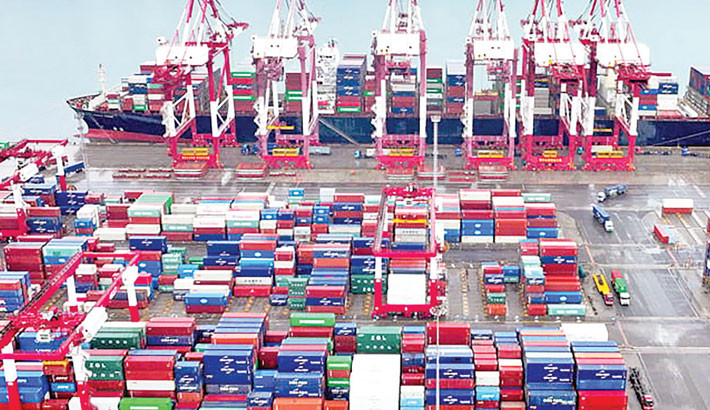‘Bangladesh to emerge global export hub leveraging Chinese investment’
BSS, Dhaka
Published: 16 Nov 2025

Bangladesh has huge potential to emerge as a global export hub by leveraging Chinese investment, technology and industrial capacity - especially in infrastructure, power generation, ready-made garments (RMG) and manufacturing sectors.
In an exclusive interview with the news agency, President of the Chinese Enterprises Association in Bangladesh (CEAB) Han Kun has said Chinese firms have been contributing significantly to Bangladesh’s economic and social development over the years, especially through major infrastructure and power projects.
“In the power sector alone, private investment in Bangladesh has increased by around 8,000 megawatts in recent years, and about 54% of that comes from Chinese enterprises,” he said.
“Chinese firms have played a major role in developing Bangladesh’s power generation and transmission capacity, now totaling around 27-28 GW,” he added.
Han said that despite this major contribution, Chinese companies often keep a low profile. “Many people may not realise how substantially Chinese investment has helped reduce Bangladesh’s development cost and accelerate infrastructure growth,” he said.
He pointed to large-scale projects such as the Padma Multipurpose Bridge, whose construction involved Chinese expertise.
Highlighting Bangladesh’s attractiveness to Chinese manufacturers, Han said, “Bangladesh is no longer just a domestic market - it can become an export-driven industrial hub.”
He pointed to Bangladesh’s competitive labour cost, improving infrastructure and its strategic location near key regional markets. According to broader studies, Bangladesh’s geopolitical significance is enhanced by its access to the Bay of Bengal and its low-cost labour force.
He urged that the proposed FTA with China is a key to this shift. Once the tariff, regulatory and investment frameworks are aligned, Bangladesh could become a site for Chinese companies to shift manufacturing from China and export globally.
“China already has about 30% of global manufacturing capacity. By locating some of their production here in Bangladesh, Chinese firms can leverage low-cost inputs and export from Bangladesh to global markets,” he said.
Nevertheless, he cautioned that policy stability and credibility remain vital. “Investors become wary when such sudden policy changes occur,” he said.
Among the concerns, he said bidding preparation, technical studies and approvals involve large costs, which may be lost overnight if a project is scrapped.
Han said that with enhanced access to Chinese inputs, equipment and technology under an FTA, Bangladesh can improve its competitiveness and supply-chain integration - thus enabling its RMG and manufacturing sectors to upscale for global export markets.
He stressed that for Bangladesh to become an export hub, several enabling elements must be in place. These are access to low-cost raw materials, semi-finished goods and capital equipment, stable and predictable policy framework and investment environment.
Han remarked, “Chinese companies are ready to bring manufacturing capacities, technology transfers and jointly set up export-oriented facilities in Bangladesh. If policies and frameworks are aligned, the potential is enormous,”

